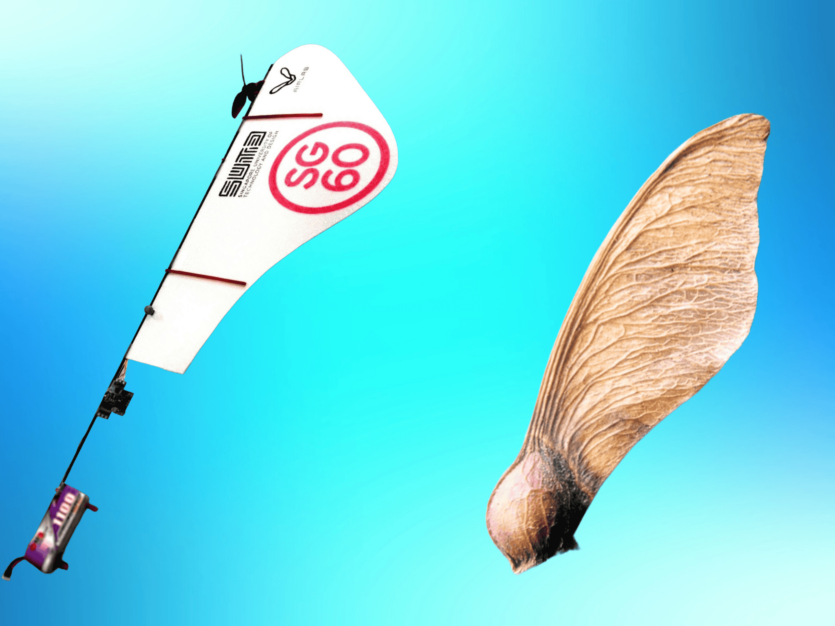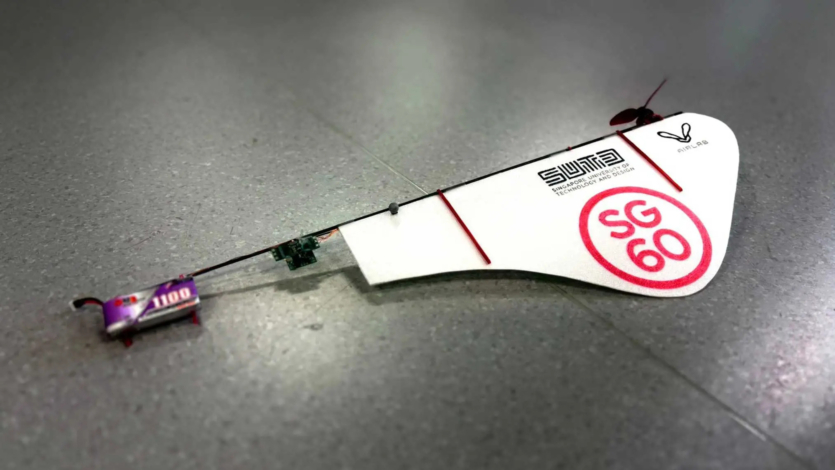
Researchers from The Singapore University of Technology and Design created a tiny drone, inspired by the way maple seeds, spin in midair as they fall, slowing their fall and using the wind to fly away from the mother tree.
“Flying becomes less and less efficient as you scale down. Small drones often have a short flight time, because their small propellers generate limited thrust but consume significant power. Our goal was to overcome this limitation”, — explains Fung Shaohui from the Singapore University of Technology and Design.
Inspired by the way maple seeds rotate to float in the air, the researchers created a palm-sized drone, that can stay aloft for 26 minutes, using only one motor. Most small drones use four or more rotors. However, the new drone uses only one.
The rotation of the entire wing creates lift and helps stabilize the drone in flight. Rotational motion simplifies the design of the aircraft, reduces its weight, and reduces energy loss.

It also reduces the so-called “disk load” that results in to the loss of energy by small screws. The load on a hovering helicopter’s rotor blade is the ratio of its weight to the total area of the main rotor blade. The lower the load on the disk, the more efficient the flight.
The drone was modeled on the basis of the aerodynamic mechanism of a rotating seed. The developers carefully recreated the wing structure and calculated the behavior of the engine and of the propeller in high airflow conditions.
They fine-tuned the wing’s mass distribution and geometry using data-driven optimization techniques, adjusting variables such as pitch, shape, and center of gravity to maximize efficiency. According to the results of laboratory tests, the design achieved specific power of 9.1 grams per watt, surpassing other microlights in its class.
The wing was made of lightweight of foam. Spar — made of carbon fiber. There is no gearbox or additional moving parts. There is only a tiny engine and rotor. Flight tests were conducted indoors.
With the help of control by capturing motion, the drone was able to maintain its position and altitude for 26 minutes, using only one engine with an average power consumption 3.5 W. The entire device weighs only 32 grams, about the same as a pair of AA batteries.
“The next step is to increase the payload and flight time without significantly increasing the weight. We also plan to use advanced materials and bio-inspired wing morphologies in the design process”, — said one of the study leaders, a researcher at the Cai Xinyu.
Due to their efficiency, simplicity and compactness, these tiny drones can be ideal for tasks such as placing weather sensors on balloons, reconnaissance in disaster zones, or conducting environmental studies in places inaccessible to larger drones. Researchers believe that this new approach could have a long-term impact.
Source: ZME Science

Spelling error report
The following text will be sent to our editors: